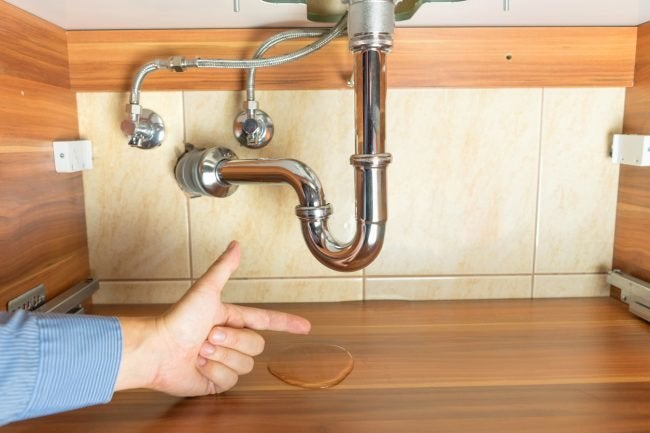The content below relating to Detecting hidden plumbing leaks is truly attention-grabbing. Read it for yourself and see what you think of it.

Early detection of dripping water lines can mitigate a prospective disaster. Some small water leakages might not be visible.
1. Take A Look At the Water Meter
Every residence has a water meter. Examining it is a proven manner in which helps you discover leakages. For beginners, shut off all the water sources. Guarantee no one will certainly purge, utilize the faucet, shower, run the cleaning machine or dish washer. From there, most likely to the meter and also watch if it will change. Given that no person is utilizing it, there need to be no motions. If it moves, that indicates a fast-moving leakage. If you find no adjustments, wait an hour or 2 and inspect back once again. This indicates you may have a sluggish leakage that could also be below ground.
2. Examine Water Intake
If you identify unexpected changes, regardless of your usage being the exact same, it suggests that you have leaks in your plumbing system. An abrupt spike in your bill shows a fast-moving leakage.
A steady boost every month, also with the very same practices, reveals you have a sluggish leakage that's also slowly escalating. Call a plumber to completely inspect your residential or commercial property, especially if you really feel a warm location on your flooring with piping below.
3. Do a Food Coloring Examination
When it involves water usage, 30% originates from bathrooms. Examination to see if they are running effectively. Drop flecks of food shade in the tank as well as wait 10 minutes. If the color in some way infiltrates your dish throughout that time without flushing, there's a leak in between the tank as well as dish.
4. Asses Outside Lines
Don't forget to examine your outside water lines also. Examination spigots by attaching a yard hose pipe. Ought to water seep out of the link, you have a loose rubber gasket. Change this and ensure all links are limited. If you have actually obtained a sprinkler system, it will certainly assist get it skillfully checked out as well as preserved annually. One small leak can lose lots of water and also spike your water bill.
5. Check and also Assess the Situation
Property owners must make it a routine to examine under the sink counters as well as also inside cabinets for any kind of bad odor or mold growth. These 2 warnings show a leak so timely focus is required. Doing regular evaluations, also bi-annually, can save you from a significant trouble.
Much more importantly, if you know your residence is already old, maintain a watchful eye on your heating systems, hoses, pipes and so on. Check for discolorations and deteriorating as most devices and pipes have a life expectancy. They will likewise naturally weaken due to damage. If you believe leaking water lines in your plumbing system, do not await it to rise. Call a specialist plumber immediately so you don't end up with a horrible mess in your home.
Early detection of dripping water lines can minimize a possible disaster. Some little water leakages may not be visible. Checking it is a surefire method that helps you discover leakages. One tiny leakage can lose tons of water as well as surge your water bill.
If you suspect dripping water lines in your plumbing system, do not wait for it to intensify.
WARNING SIGNS OF WATER LEAKAGE BEHIND THE WALL
PERSISTENT MUSTY ODORS
As water slowly drips from a leaky pipe inside the wall, flooring and sheetrock stay damp and develop an odor similar to wet cardboard. It generates a musty smell that can help you find hidden leaks.
MOLD IN UNUSUAL AREAS
Mold usually grows in wet areas like kitchens, baths and laundry rooms. If you spot the stuff on walls or baseboards in other rooms of the house, it’s a good indicator of undetected water leaks.
STAINS THAT GROW
When mold thrives around a leaky pipe, it sometimes takes hold on the inside surface of the affected wall. A growing stain on otherwise clean sheetrock is often your sign of a hidden plumbing problem.
PEELING OR BUBBLING WALLPAPER / PAINT
This clue is easy to miss in rooms that don’t get much use. When you see wallpaper separating along seams or paint bubbling or flaking off the wall, blame sheetrock that stays wet because of an undetected leak.
BUCKLED CEILINGS AND STAINED FLOORS
If ceilings or floors in bathrooms, kitchens or laundry areas develop structural problems, don’t rule out constant damp inside the walls. Wet sheetrock can affect adjacent framing, flooring and ceilings.
https://www.servicemasterbyzaba.com/blog/how-to-detect-water-leakage-in-walls/

We were made aware of that article about Leaking water lines through a good friend on a different site. Enjoyed our review? Please share it. Let another person find it. Thank-you for your time invested reading it.